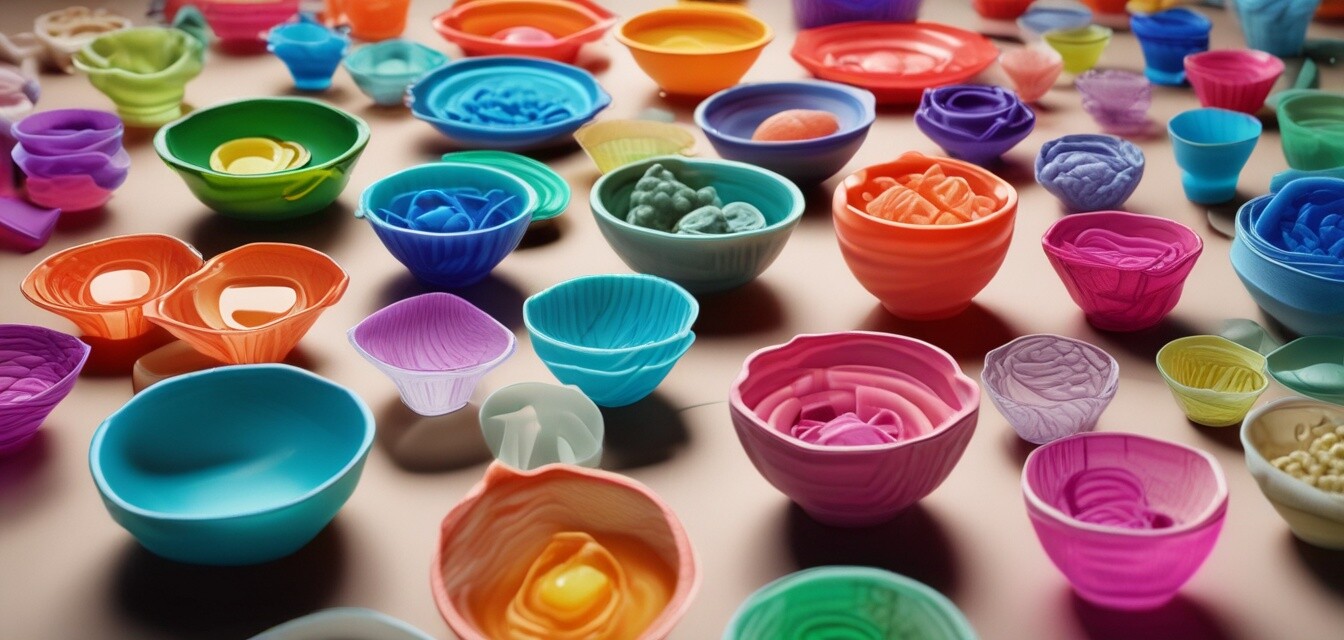
The benefits of using 3D-printed molds in glass art
- 3D-printed molds offer unparalleled precision for glass artists.
- Design flexibility allows for innovative and personalized creations.
- Cost-effective production for custom molds enhances accessibility for artists.
- Streamlined production process reduces time and effort in creating molds.
- Durability of 3D-printed molds can lead to longer-lasting usage.
In the glass art world, having the right molds is essential for creating intricate designs and achieving precise shapes. Traditional casting molds have served artists for years, but advancements in technology have introduced new possibilities. 3D printing has emerged as a revolutionary technique that allows artists to create custom molds tailored to their specific artistic vision. In this article, we will explore the numerous benefits of using 3D-printed molds in glass art, emphasizing precision, design flexibility, and more.
Why Choose 3D-Printed Molds?
Utilizing 3D printing technology comes with a wide array of advantages for glass artists. Below are some key reasons why you should consider integrating 3D-printed molds into your glass-making process:
- Precision: 3D printing technology offers exceptional accuracy, ensuring that every detail of your design is faithfully reproduced. This precision is especially important for intricate glass art pieces where every small detail matters.
- Customization: With 3D printing, the customization options are virtually limitless. Artists can design unique molds that reflect their individual style, allowing for creativity that traditional methods may not provide.
- Cost-Effective: While traditional mold making can be expensive and time-consuming, 3D-printed molds can be produced at a lower cost. This makes it more accessible for artists to create custom molds without breaking the bank.
- Efficiency: The production time for 3D-printed molds is significantly reduced compared to traditional methods, allowing artists to work faster and more efficiently. This streamlining of the process can lead to a greater output of artwork.
- Durability: 3D-printed molds are often made from robust materials, which can withstand the heat and pressure involved in glass making, leading to a longer lifespan compared to conventional molds.
Table: Comparison of Traditional Molds vs. 3D-Printed Molds
| Feature | Traditional Molds | 3D-Printed Molds |
|---|---|---|
| Precision | Moderate | High |
| Customization | Limited | Unlimited |
| Production Cost | High | Lower |
| Production Time | Long | Short |
| Durability | Variable | High |
Examples of Glass Art Projects Using 3D-Printed Molds
Artists can create an array of fascinating glass art projects using 3D-printed molds. Some popular projects include:
- Bowl Designs: Using custom molds to craft unique bowl shapes that highlight personal style.
- Plate Art: 3D-printed molds can create intricate plate designs that stand out during any meal.
- Jewelry Creations: Small detailed molds designed for rings, pendants, and earrings.
- Home Decor: Specialized molds for vases and decorative pieces that elevate living space aesthetics.
- Custom Castings: More complex shapes not typically achievable with standard molds.
Incorporating 3D-Printed Molds into Your Process
Implementing 3D-printed molds into your glass-making workflow does not require extensive changes. Follow these simple steps to get started:
- Research and learn about available 3D printing techniques and materials suitable for mold making.
- Create detailed designs for your molds using CAD software.
- Choose a reliable 3D printer or service to produce your molds.
- Test the molds with your glass materials and adjust the designs as needed.
- Experiment with different mold designs to expand your artistic repertoire.
Pros
- Unmatched precision and detail in mold creation.
- Unlimited design potential for unique artwork.
- Cost-efficient production process for custom molds.
- Efficient turnaround time making for quicker projects.
- Diverse materials options for durability and flexibility.
Cons
- Initial learning curve for designing molds.
- Requires access to 3D printing technology.
- Possible limitations in material compatibility with certain glass types.
Conclusion
In summary, 3D-printed molds present a transformative opportunity for glass artists looking to enhance their craft. The benefits of precision, customization, and efficiency are compelling reasons to explore this technology. Whether you are a seasoned artist or just starting your journey in glassmaking, incorporating 3D-printed molds can help bring your unique designs to life. For more insights and tips on glass art, check out our glass molds blog for further exploration of various mold options.
As you continue your glass art adventure, consider embracing the possibilities that 3D printing has to offer for creating beautifully crafted pieces. With time and experimentation, you can unlock new dimensions of creativity.

